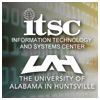Talkoot Portals: Discover, Tag, Share, and Reuse Collaborative Science Workflows
| Title | Talkoot Portals: Discover, Tag, Share, and Reuse Collaborative Science Workflows |
| Publication Type | Conference Paper |
| Year of Publication | 2009 |
| Authors | Wilson, BD, Ramachandran, R, Lynnes, C |
| Conference Name | American Geophysical Union |
| Date Published | 12/2009 |
| Conference Location | San Francisco, CA |
| Keywords | Workflow |
| Abstract | A small but growing number of scientists are beginning to harness Web 2.0 technologies, such as wikis, blogs, and social tagging, as a transformative way of doing science. These technologies provide researchers easy mechanisms to critique, suggest and share ideas, data and algorithms. At the same time, large suites of algorithms for science analysis are being made available as remotely-invokable Web Services, which can be chained together to create analysis workflows. This provides the research community an unprecedented opportunity to collaborate by sharing their workflows with one another, reproducing and analyzing research results, and leveraging colleagues’ expertise to expedite the process of scientific discovery. However, wikis and similar technologies are limited to text, static images and hyperlinks, providing little support for collaborative data analysis. A team of information technology and Earth science researchers from multiple institutions have come together to improve community collaboration in science analysis by developing a customizable “software appliance” to build collaborative portals for Earth Science services and analysis workflows. The critical requirement is that researchers (not just information technologists) be able to build collaborative sites around service workflows within a few hours. We envision online communities coming together, much like Finnish “talkoot” (a barn raising), to build a shared research space. Talkoot extends a freely available, open source content management framework with a series of modules specific to Earth Science for registering, creating, managing, discovering, tagging and sharing Earth Science web services and workflows for science data processing, analysis and visualization. Users will be able to author a “science story” in shareable web notebooks, including plots or animations, backed up by an executable workflow that directly reproduces the science analysis. New services and workflows of interest will be discoverable using tag search, and advertised using “service casts” and “interest casts” (Atom feeds). Multiple science workflow systems will be plugged into the system, with initial support for UAH’s Mining Workflow Composer and the open-source Active BPEL engine, and JPL’s SciFlo engine and the VizFlow visual programming interface. With the ability to share and execute analysis workflows, Talkoot portals can be used to do collaborative science in addition to communicate ideas and results. It will be useful for different science domains, mission teams, research projects and organizations. Thus, it will help to solve the “sociological” problem of bringing together disparate groups of researchers, and the technical problem of advertising, discovering, developing, documenting, and maintaining inter-agency science workflows. The presentation will discuss the goals of and barriers to Science 2.0, the social web technologies employed in the Talkoot software appliance (e.g. CMS, social tagging, personal presence, advertising by feeds, etc.), illustrate the resulting collaborative capabilities, and show early prototypes of the web interfaces (e.g. embedded workflows). |
| URL | http://adsabs.harvard.edu/abs/2009AGUFMIN34B..03W |
Involved Persons:
- Log in to post comments
- Google Scholar




